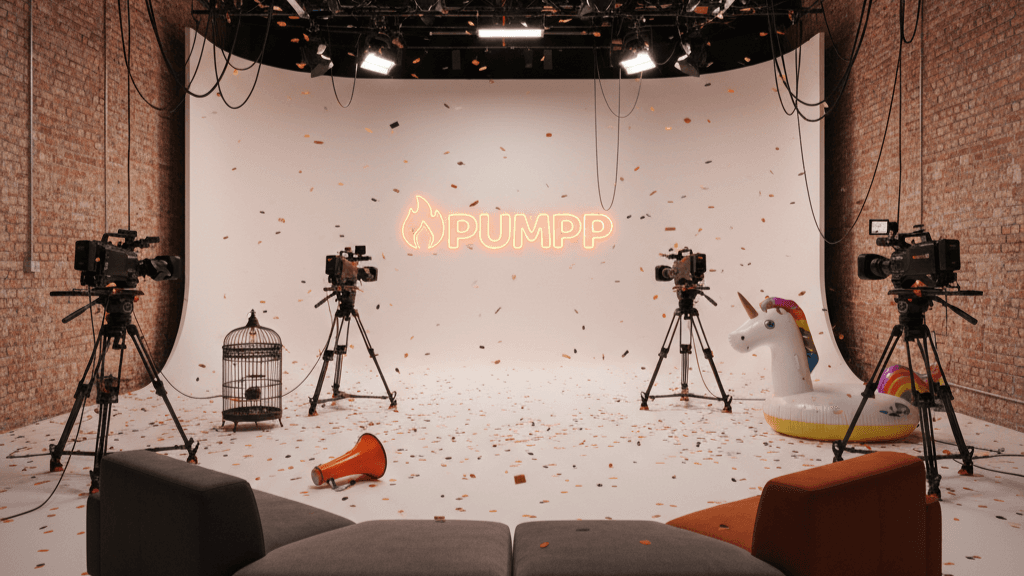Color Psychology for AI Content: Unlocking Emotional Resonance


Introduction
In the digital age, where AI is rapidly transforming content creation, the subtle art of color psychology remains a cornerstone of effective communication. Colors are not just aesthetic choices; they are powerful psychological triggers that can evoke specific emotions, influence perceptions, and drive user engagement. For those leveraging AI in their branding, design, or marketing efforts, understanding how to strategically deploy color is paramount. This guide provides a deep dive into the fascinating world of color psychology, offering practical guidance to help you integrate emotionally resonant color palettes into your AI-generated content.
The Psychology of Color: A Foundation for AI Content
Every color tells a story, and for AI-driven content, knowing which story to tell is crucial. Our understanding of color psychology stems from both cultural associations and inherent human responses. For instance, red often signifies passion, urgency, or danger, making it suitable for calls to action or warnings. Blue, on the other hand, typically evokes trust, serenity, and professionalism, commonly seen in financial or tech industries. Green is associated with nature, growth, and health, while yellow often represents optimism and cheerfulness. When crafting AI prompts, understanding these fundamental psychological principles allows you to guide the AI toward generating visuals and content that align with your desired emotional impact.

Mapping Colors to Emotions, Industries, and Audiences
To effectively utilize color psychology in your AI content, it's essential to create a strategic map that links colors to specific emotions, target industries, and desired audience responses. This foundational work empowers you to provide precise instructions to your AI, ensuring the generated content resonates deeply.
Emotional Impact of Colors
Different colors elicit distinct emotional responses:
- Red: Passion, urgency, excitement, warning. Ideal for sales, alerts, or high-energy brands.
- Blue: Trust, serenity, professionalism, stability. Frequently used in finance, tech, and healthcare.
- Green: Nature, growth, health, prosperity. Perfect for eco-friendly brands, wellness, and finance.
- Yellow: Optimism, cheerfulness, energy, warmth. Great for creative industries, children's products, or to draw attention.
- Orange: Enthusiasm, creativity, affordability. Often seen in e-commerce, food, and entertainment.
- Purple: Luxury, creativity, royalty, spirituality. Suited for high-end products, fashion, and artistic endeavors.
- Black: Sophistication, power, elegance, mystery. Common in luxury brands, fashion, and modern design.
- White: Purity, simplicity, cleanliness, modernity. Used widely in healthcare, tech, and minimalist design.
Industry Applications
Consider the prevailing color schemes within your industry. While breaking conventions can be effective, understanding norms helps in strategic differentiation. A financial institution might lean towards blues and greens to convey trust and stability, whereas a children's toy company would likely utilize a vibrant palette of yellows, oranges, and reds.
Audience Response
Age, cultural background, and demographics play a significant role in how colors are perceived. A youthful audience might respond well to bright, energetic colors, while an older demographic might prefer more muted, sophisticated tones. Researching your target audience's color preferences is a critical step in maximizing engagement.
Step-by-Step Guide: Integrating Color Psychology into AI Prompts
Leveraging color psychology within AI content generation involves a systematic approach. The following steps will guide you through the process, from defining your objectives to refining your AI prompts.
1. Define Your Objective and Desired Emotion
Before you even think about colors, clearly articulate the primary objective of your AI-generated content. Are you aiming to drive sales, build brand awareness, educate your audience, or evoke a specific feeling? Once the objective is clear, identify the single most important emotion you want to convey. For example, if you're launching a new sustainable product, your objective might be "to build trust and promote environmental responsibility," and the desired emotion could be "serenity and hope."
2. Select Your Primary and Secondary Colors
Based on your objective and desired emotion, consult the color psychology principles to select your primary color. This will be the dominant color that encapsulates the core message. Then, choose one or two secondary colors that complement the primary and support the overall emotional narrative without competing with it. For our sustainable product example, a primary green (nature, growth) could be paired with a soft blue (trust, serenity) or an earthy brown (authenticity, natural).
3. Identify Hex Codes and AI Prompt Keywords
Once you have your colors, find their corresponding Hex Codes. These are essential for precise communication to design tools and, increasingly, to sophisticated AI models capable of generating visual content. Here's a practical example:
- Green (#4CAF50): Nature, Growth, Harmony — Keywords: "Vibrant green," "eco-friendly," "natural," "calming"
- Blue (#2196F3): Trust, Serenity, Professionalism — Keywords: "Sky blue," "trustworthy," "peaceful," "professional"
- Yellow (#FFEB3B): Optimism, Energy, Cheerfulness — Keywords: "Sunny yellow," "energetic," "optimistic," "joyful"

4. Craft Your AI Prompt with Color Directives
When constructing your AI prompt, integrate your chosen colors and their psychological cues directly. Be explicit and descriptive. Instead of simply saying "generate a marketing banner," use language that guides the AI on color and mood.
Example Prompt:
"Create a social media graphic for a new organic skincare line. The graphic should convey a sense of natural purity and gentle efficacy. Utilize a palette dominated by soft, calming greens (Hex: #8BC34A), complemented by subtle, serene blues (Hex: #B3E5FC). The overall tone should be fresh, trustworthy, and evoke a feeling of natural wellness. Include an elegant, handwritten-style font for the product name 'Botanical Glow'."
By providing hex codes and descriptive color keywords, you give the AI precise instructions, leading to more accurate and emotionally resonant outputs.
Practical Applications: Real-World Scenarios
Understanding theory is one thing; applying it effectively is another. Let's explore how different industries can leverage color psychology in their AI content generation:
- E-commerce: Use orange and red accents for urgency-driven sales campaigns while maintaining brand consistency with your primary palette.
- Healthcare: Employ calming blues and greens to convey trust, cleanliness, and well-being in patient-facing materials.
- Tech Startups: Combine professional blues with energetic accent colors to balance innovation with reliability.
- Luxury Brands: Leverage black, gold, and purple to communicate sophistication, exclusivity, and premium quality.
- Wellness & Sustainability: Earth tones, greens, and soft blues create an authentic, natural, and trustworthy brand presence.
Advanced Techniques: Multi-Color Harmonies
While single colors pack powerful psychological punches, color harmonies—complementary, analogous, and triadic schemes—can create even more sophisticated emotional landscapes. When prompting AI for complex designs, consider specifying these relationships:
- Complementary Colors: Opposite on the color wheel (e.g., blue and orange) create high contrast and visual energy.
- Analogous Colors: Adjacent on the wheel (e.g., blue, teal, green) produce harmonious, calming compositions.
- Triadic Colors: Evenly spaced around the wheel (e.g., red, yellow, blue) offer vibrant yet balanced palettes.
Incorporating these principles into your AI prompts enables you to create visually compelling content that maintains emotional coherence across all brand touchpoints.
Common Pitfalls and How to Avoid Them
Even with a solid understanding of color psychology, it's easy to make missteps when working with AI. Here are common pitfalls and their solutions:
- Overloading with Colors: Too many colors create confusion. Stick to a primary color and 2-3 supporting colors maximum.
- Ignoring Cultural Context: Colors carry different meanings across cultures. Research your target audience's cultural associations.
- Being Too Vague in Prompts: Generic color descriptions like "nice blue" yield inconsistent results. Always use hex codes and specific descriptors.
- Neglecting Accessibility: Ensure sufficient contrast ratios for readability, especially for text. Include accessibility directives in your prompts.
- Inconsistent Application: Maintain color consistency across all AI-generated assets to build brand recognition and trust.
Conclusion: Master Your Brand's Emotional Spectrum
Mastering color psychology in the age of AI content is a powerful differentiator. By understanding the emotional language of colors and effectively communicating these nuances to your AI tools, you can elevate your brand's presence, deepen audience engagement, and achieve your marketing objectives with unprecedented precision.
The intersection of color psychology and AI represents an exciting frontier in digital marketing and design. As AI models become increasingly sophisticated in their understanding of visual aesthetics and emotional resonance, your ability to guide them with precise color directives will directly translate to more impactful, conversion-driving content.
Don't leave your brand's emotional impact to chance. Start guiding your AI with purpose today. Get started with Pumpp and harness the power of emotionally intelligent AI content that truly resonates with your audience.

